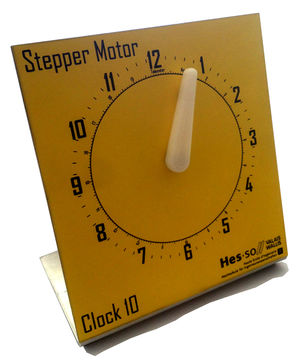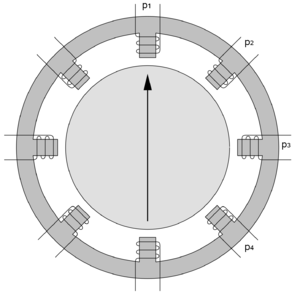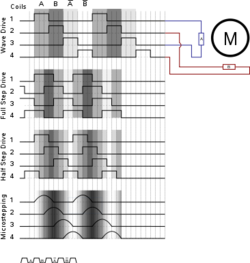Chrono/assembly
|
Assembly
The assembly consists of
- a stepper motor with 200 steps/turn
- a single hand mounted on the motor's axis
- a Reed relay to indicate position 12 o'clock
Two versions exist. The connectors to the FPGA board are pin compatible.
The assembly is powered with 12 V. It comprises a regulator which generates a 5 V power supply for the FPGA board.
Motor control
The chronometer stepper motor can be powered from 8 V to 12 V. The power control board contains an H-bridge driver circuit controlled by digital signals.
The stepper motor can be regarded as having a stator with coils repeating the same 4-phase sequence and a rotor acting as a magnet. Driving current into one of the coils forces the rotor to turn facing to the selected coil.
The motor of the preceding picture is drawn with 8 possible positions. The actual motor has 200 steps per turn.
The control signals are 4 phases, and the motor can be controlled in wave drive.
Tests have shown that the motor can be driven to rotate at up to 1 or 2 revolutions per second.
Reed relay
A Reed relay is used to indicate the 12 o'clock position. A Reed relay is a switch which is controlled by a magnet: when the magnet is close enough to the sensor, the contact closes.
In the chronometer assembly, the magnet is mounted on the tip of the hand. When the hand comes close to the 12 o'clock position, the Reed relay closes. However, this does not imply that the hand is already at the proper position. Some extra steps might be necessary to effectively reach the 12 o'clock position.



